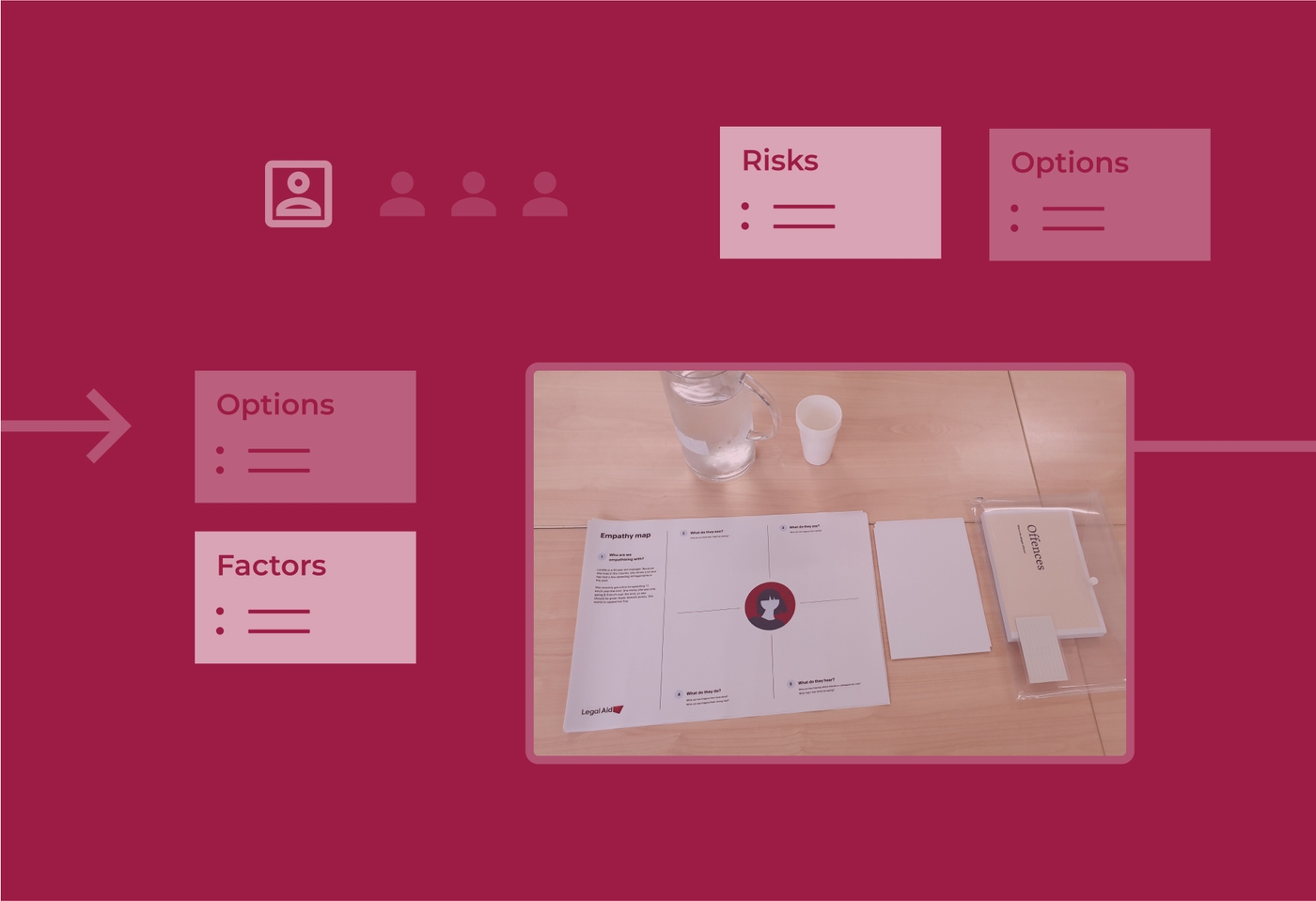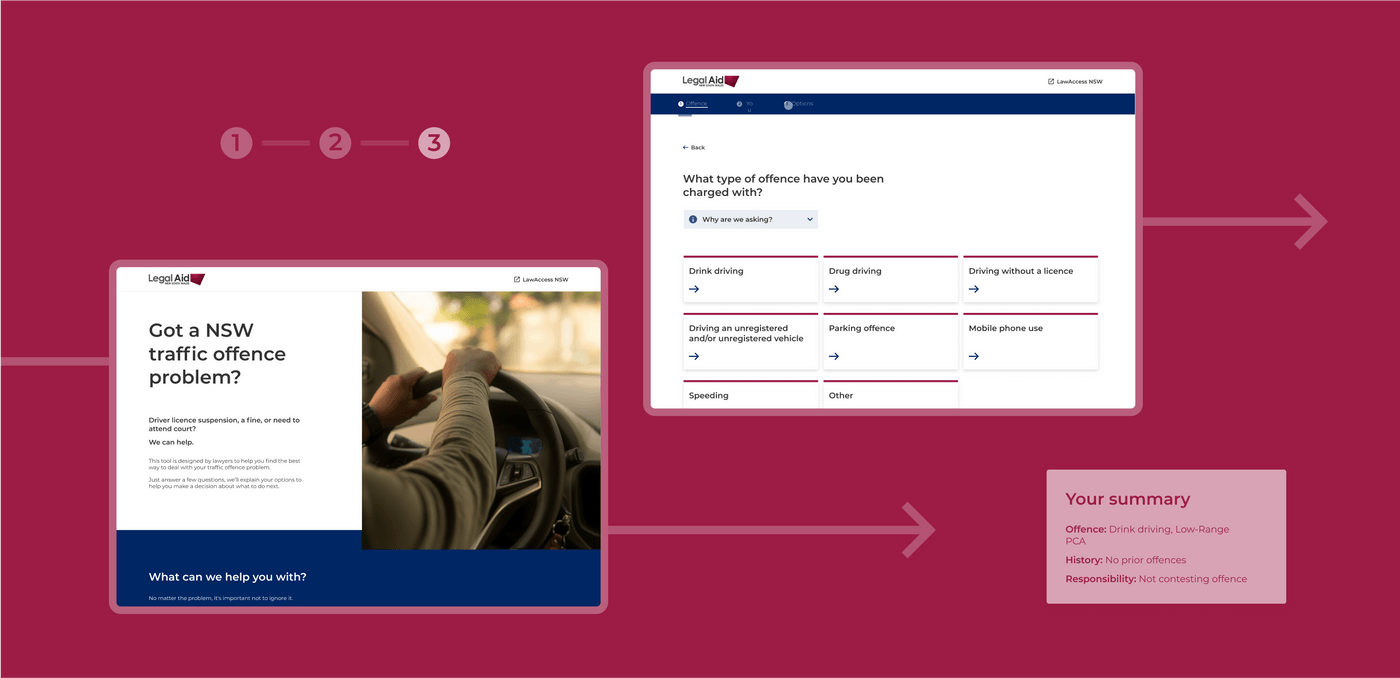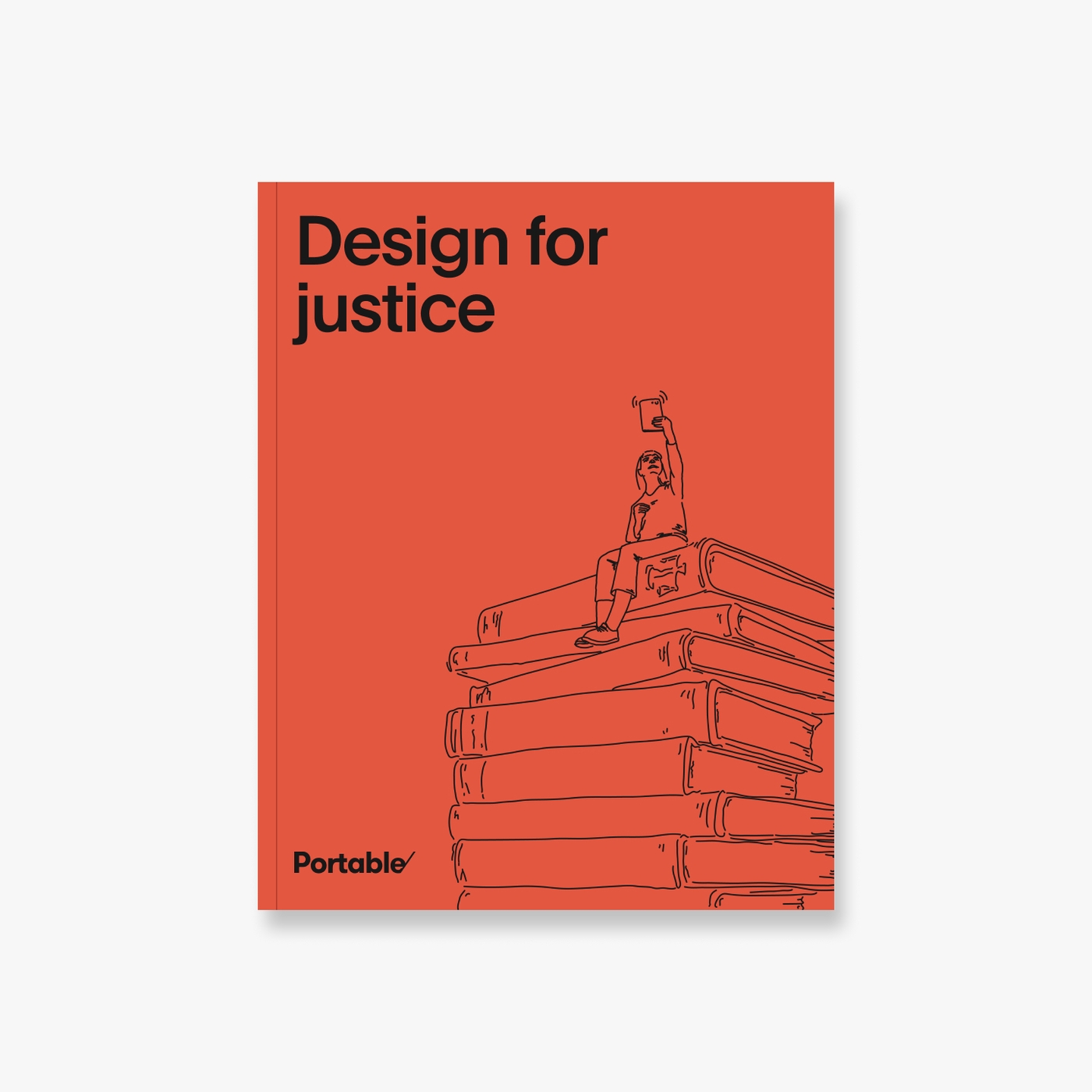Driven by their 2018-2023 Strategic Plan, Legal Aid NSW set out to develop tools, methods and services that allowed the organisation to meet their clients’ needs. They have a mandate to help people, particularly those who are disadvantaged, to know, defend and assert their rights. One of the avenues they chose to focus on was traffic-related infringements – they wanted to build an online guided pathway to steer clients to resolve their own legal matters. We co-designed, user-tested and developed this new platform for traffic offences and launched it in late June 2020.
Legal Aid NSW is the largest legal aid commission in Australia, providing legal services for people with criminal, family, and civil law issues. They have a particular focus on assisting socially and economically disadvantaged people across New South Wales. Working with Legal Aid NSW was a natural partnership for us, since their client service strategy focused on understanding client needs and giving their clients a voice in designing service improvements. We began working with Legal Aid NSW in 2018 by researching how residents of New South Wales would like their legal aid services to move online. We co-designed quick wins for the Legal Aid NSW digital roadmap and worked with them to implement one of those solutions into the Legal Aid NSW Grants Tracker, which had over 2,000 clients sign up in the first month and recently took home silver in the 2020 Sydney Design Awards.
Design challenge
Low complexity traffic offences (such as speeding fines) make up a significant proportion of Legal Aid NSW advice services, but primarily entail lawyers repeating straightforward procedural information. Legal Aid NSW were looking for a solution to support both their staff and clients in providing legal information for traffic-related matters.
We identified that staff at Legal Aid NSW and LawAccess NSW, and their clients, needed an online guided pathway so that:
- call volumes could be reduced relating to low complexity matters and resources could be freed up to deal with higher complexity matters
- the client experience of accessing support and guidance for low complexity matters would be improved
- stress for clients would be reduced as a result of having access to information on their own accord via streamlined legal pathways without needing to wait for support
- clients who are unable to easily access legal advice due to work or carer commitments, their remote location, or if they are living with a disability can more easily access the information they need to resolve their low complexity matter.
Approach
Discovery phase
We began this project by defining the problem in collaboration with Legal Aid NSW by interviewing their lawyers who specialise in traffic infringements and designing workflows alongside Legal Aid NSW staff. We conducted interviews and desktop research to gain insights into the existing experience of how Legal Aid NSW currently helps clients with their low complexity traffic matters.
Co-design
We brought our ideas to the people experiencing the problem by validating our workflows and writing plain English content through co-design workshops with Legal Aid NSW clients. This helped our team to develop an insights report and create content recommendations, which then formed our initial prototypes.
Testing content and navigational prototypes
We tested our prototypes through a series of user testing sessions with people who had sought legal help in the past to help discover, validate and refine the information pathways, content and tone of voice in order to meet their user needs. The final prototype included the user journeys, features and a technical approach which informed the development phase.
Technical design
We then focused on turning our concepts into reality. We facilitated a technical workshop with Legal Aid NSW’s technical stakeholders to identify and outline recommendations for platform requirements and supporting technology, such as hosting and infrastructure. From here, we began the build of the guided pathways.

Development phase
Our team of developers then worked across seven sprints to bring the platform to life.
Modern responsive design
We used Storybook to build out a user interface component library since this allowed for quick iterations and an agile workflow between our development and design teams, all while adhering to Legal Aid NSW’s style guide. Our approach to building component libraries enabled our team to run automated tests on a suite of components, again to ensure that the guided pathways met rigorous accessibility standards. Collaboratively building the individual user interface components ensured that the front end design met best practice accessibility and usability standards. We focused on creating reusable, future-proof technology to allow for more efficient and considered builds for future projects.
Headless CMS
We used a headless CMS to take advantage of the flexible content modelling tools of a CMS like Drupal, while allowing us to individually update both the front and back end of the tool. Our two main requirements for the CMS were to build something secure and easy to use. To achieve this, we set up two-factor authentication of the CMS to create a secure login for Legal Aid NSW content editors, and built simple CMS workflows and editing tools to give these content editors the confidence to update the guided pathways.
Infrastructure as code
We used Terraform to provision our staging, user acceptance testing and production environments in Amazon Web Services. By having codified, configurable infrastructure, we were able to include updates and recommendations around security and performance in our primary configuration and then deploy those to each of the environments in a repeatable and consistent manner. Our development team ran continuous deployments and carried out automated testing with each deployment, to create a safe, reliable and scalable deployment pipeline.
Security and penetration testing
We then worked closely and proactively with Legal Aid NSW’s third party security consultants to ensure the guided pathway tool passed a range of extensive security tests, including those centered around protecting user data and privacy through both web application and web service security auditing techniques.

Outcomes
- The guided pathway assists people to get help without needing to see a lawyer, or allows them to take the first step in solving their problem before seeing a lawyer for further advice. The guided pathway frees up time for the advice clinic staff at Legal Aid NSW to support more disadvantaged and vulnerable clients, or those with more complex matters.
- The Traffic Guided Pathways sits alongside guided pathways for other problem areas on the Law Access NSW website.
- Co-designing the guided pathway with Legal Aid NSW’s clients and the team of legal advice experts at Legal Aid NSW brought this digital tool to life and created something that is useful and accessible for a range of people with traffic issues in NSW.
- We’ve already seen 433 users (as of 22 September 2020) use the guided pathway to solve low-complexity matters since its launch in late June 2020. We hope that this project serves as a model for providing accessible self-help legal information.
- Experience the guided pathway platform yourself.
Judy Archer, Project Lead, Client Service Unit, Legal Aid NSW:
“Working with the Portable team was great. They were very professional and worked with us to ensure that they delivered a high quality product within quite tight timeframes. We are very happy with the traffic guided pathway, it is a fantastic resource for people in NSW who need help with their low complexity traffic offences.”
Ashlee West, Experience Design Lead, Portable:
“It was amazing to work with such an engaged team at Legal Aid NSW and to design this product alongside people from the community. We even had a number of people who attended our co-design workshops come back to participate in both rounds of usability testing, so we were able to measure how well we brought their ideas to life.”
Download our free report on design for justice
